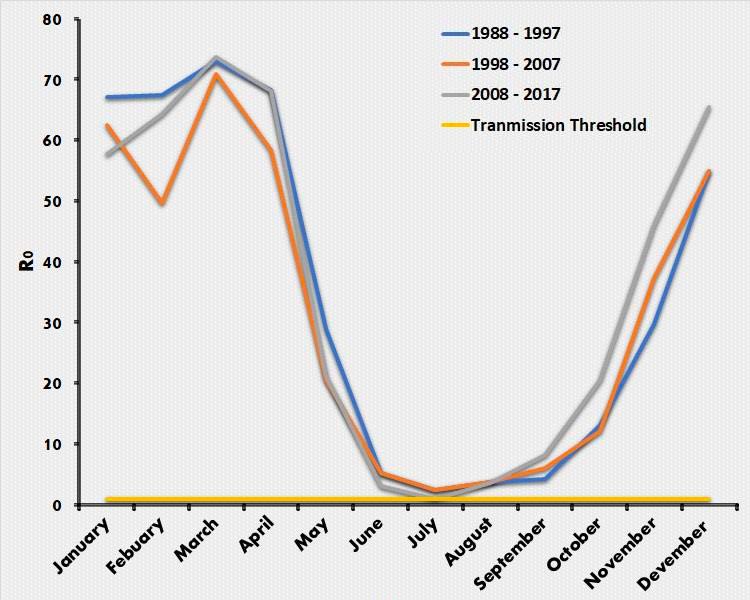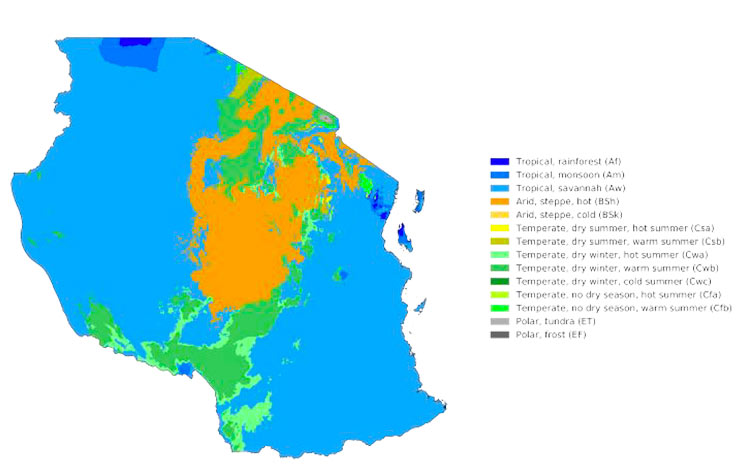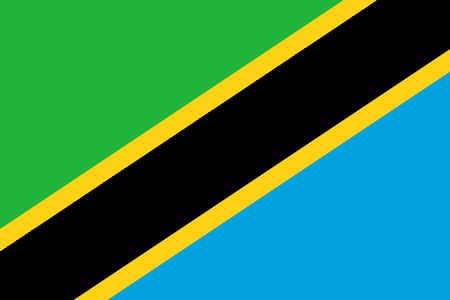Transmission Potential:
H.contortus survives in warm and moist conditions. Transmission periods are usually considered to be between 15-37 ◦C (Van Wyke and Reynecke 2011). The R0 model predicts when climate is going to be suitable for parasite transmission.
Tanzania Climate:
A highly variable climate. Figure 1 should be viewed with an understanding of this. Future work will show the results on a regional scale. Most of the east and west is comprised of tropical savannah and there is a belt of temperate conditions throughout the centre of the country. The central, south and south west have different rainfall patterns compared to the north. The wet season is typically between October and April in these regions with rains in the north happening between October to December and again from March until May.



